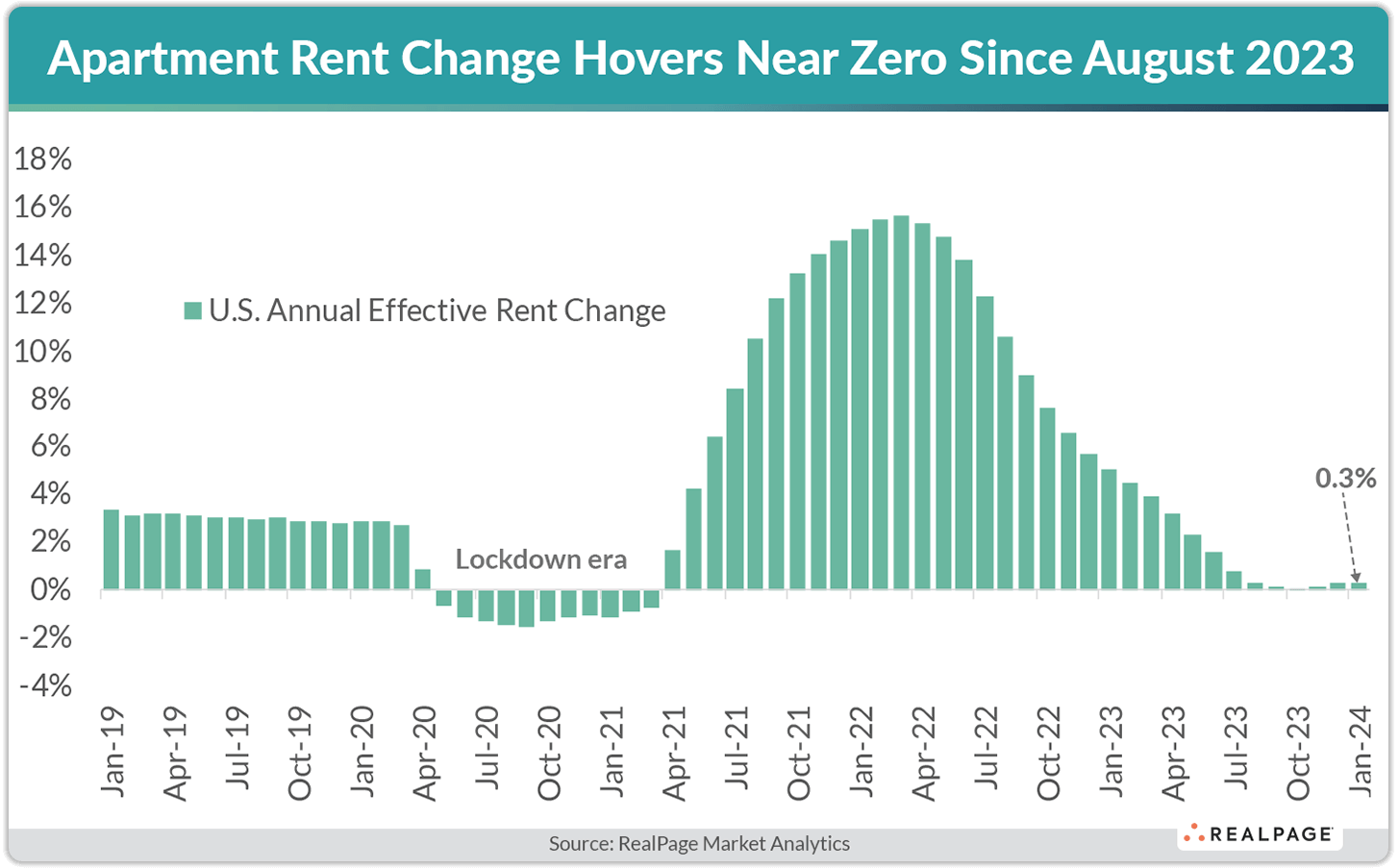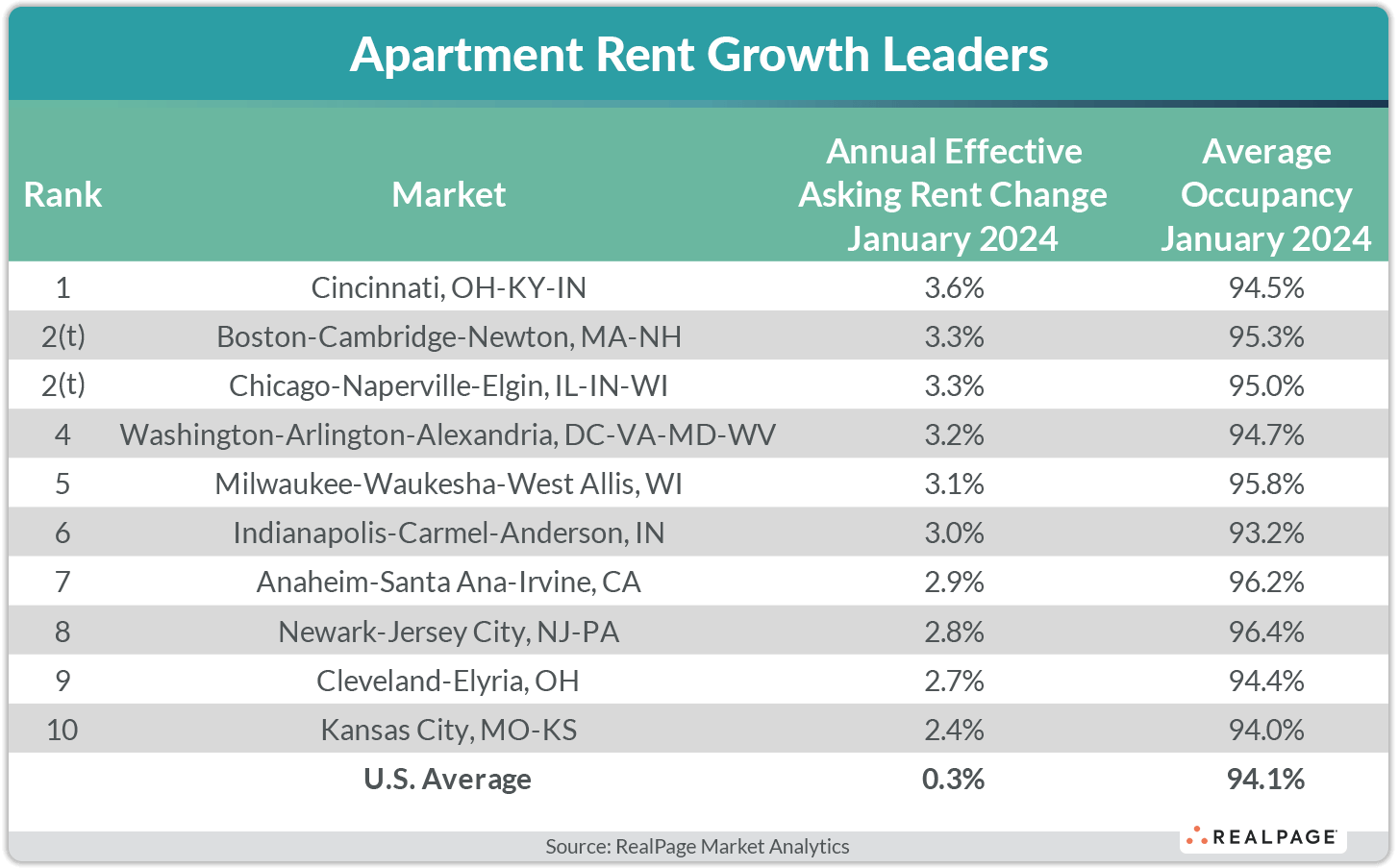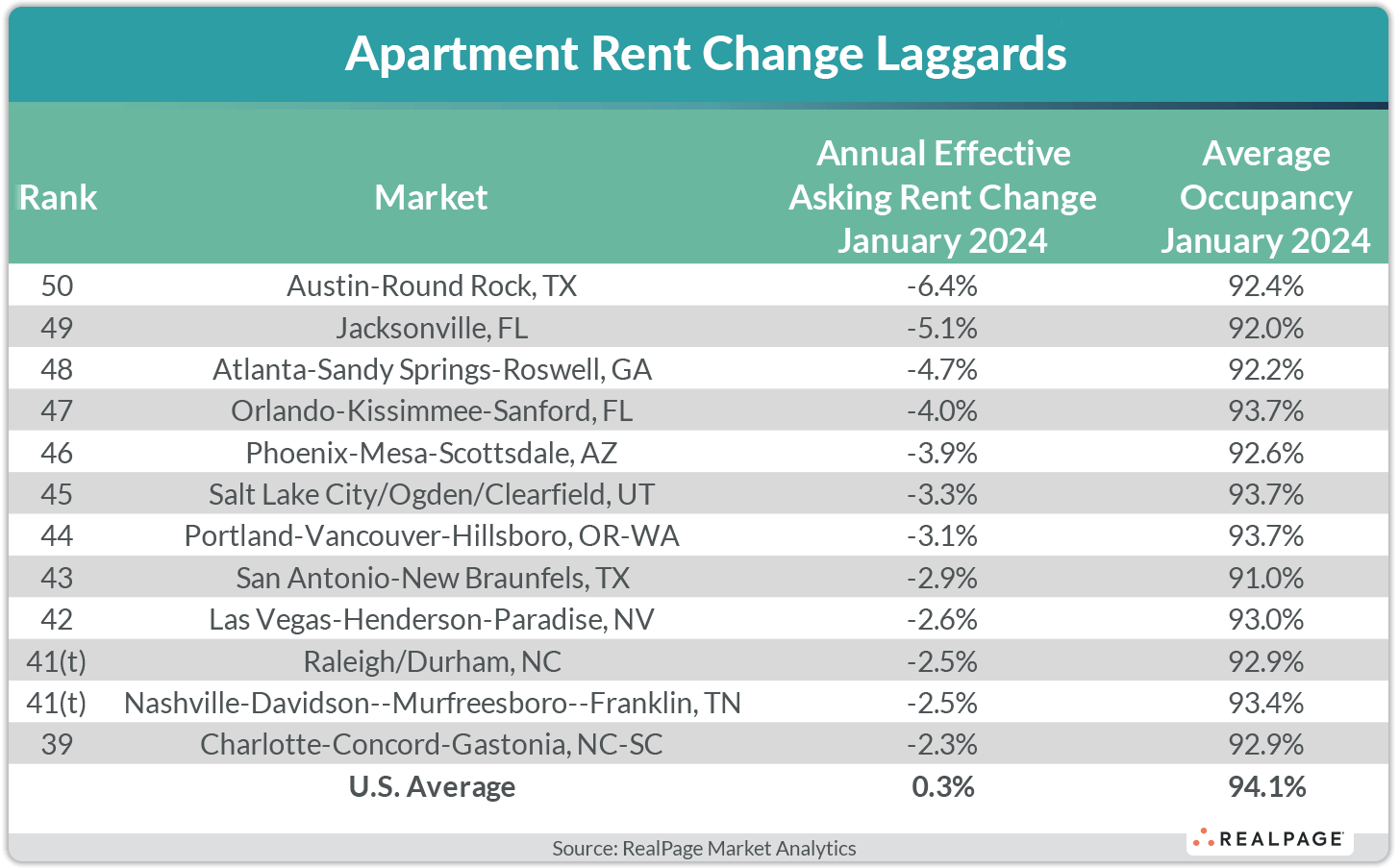Apartment rent growth hovered just above stagnant in January, as has been the case since August 2023. Rents for professionally managed apartments ticked up a minor 0.3% in the year-ending January 2024, with change measured on a same-store basis.
January’s rate registered in line with December 2023’s reading, indicating that while the deceleration of rent change may have leveled off, a meaningful re-acceleration of rent growth is also unlikely. RealPage continues to expect rent growth to remain fairly flat through 2024, with many markets posting cuts.
Tepid rent growth at the start of 2024 may seem counterintuitive considering the resurgence of apartment demand over the past 12 months. But it’s important to remember that supply also increased substantially during that same window. In fact, the volume of new supply outpaced absorption and that trend will likely persist throughout 2024. As such, rent growth should continue to face downward pressure as a result of new apartment deliveries.
Nearly 440,000 apartment units delivered across the nation’s 150 largest apartment markets in calendar 2023, marking a 2.3% boost to the nation’s total apartment inventory, according to data from RealPage Market Analytics. Simultaneously, the nation absorbed nearly 234,000 apartment units in 2023 – a healthy rate of demand that still failed to meet concurrent levels of new supply.
Nearly 962,000 apartment units were under construction across the nation at the end of 2023, with about 672,000 of those units expected to deliver in 2024.
Occupancy in January remained unchanged from December’s rate – at a 10-year low of 94.1%. This reading, along with December’s 2023 identical reading, collectively registers as the lowest rate seen since January 2014. Nationwide, apartment occupancy declined 70 basis points (bps) year-over-year in January. This was the nation’s mildest year-over-year occupancy loss since June 2022.
Among the nation’s top 50 apartment markets, rent change varied greatly, ranging from moderate rent growth throughout much of the Midwest to deep cuts in some places – primarily high-supply markets.
Markets that continue to post annual rent growth above 2% have become more of the exception than the norm. In fact, just 13 of the nation’s 50 largest metro areas saw same-store rents expand by more than 2% in the year-ending January 2024. These markets are overwhelmingly clustered in Midwestern U.S. such as Cincinnati, Chicago, Milwaukee, Indianapolis, Cleveland and Kansas City.
High supply markets dominated the list of rent growth laggards in January 2024. Austin, which added over 17,000 apartment units in 2023, deepened annual rent cuts again in January to register at the worst rate in the nation, among top 50 markets. Other markets that have added massive volumes of new apartment units recently and also posted deep rent cuts in January 2024 included Atlanta, Phoenix, Salt Lake City, Raleigh/Durham, Nashville and Charlotte.
Still, as RealPage data has been indicating for months, the slowdown in rent is caused by heavy supply, not a lack of demand. As evidenced by this, less than half of the nation’s top 50 markets reported a month-over-month contraction in occupancy. During the seasonally slow leasing period of winter, that indicates healthy demand across most major markets. Similarly, many cold weather markets that generally experience net move-outs during the winter maintained steady occupancy month-over-month in January, including New York, Boston and Washington, DC.
Meanwhile, influencing housing demand, the U.S. labor market looked excellent in January, adding more than 350,000 workers to payrolls in January 2024 alone, according to the Bureau of Labor Statistics.
Multifamily permits and starts both closed out 2023 below their year-ago levels. Multifamily permits were down 26.6% and multifamily starts were down 9.5% in calendar 2023, according to the U.S. Census Bureau. Both metrics further the notion that multifamily supply will peak in 2024 and then taper off considerably, as supported by RealPage Market Analytics data.










